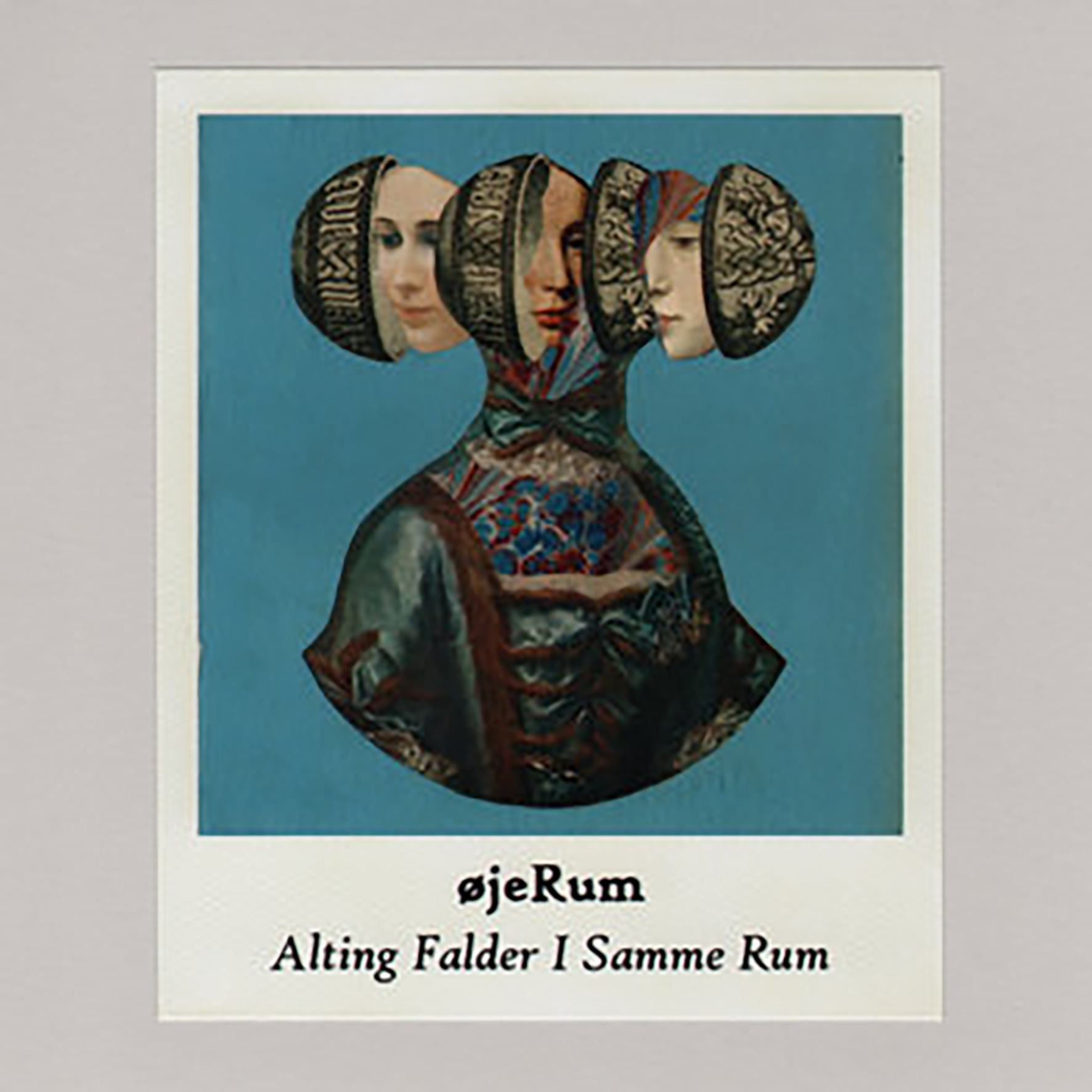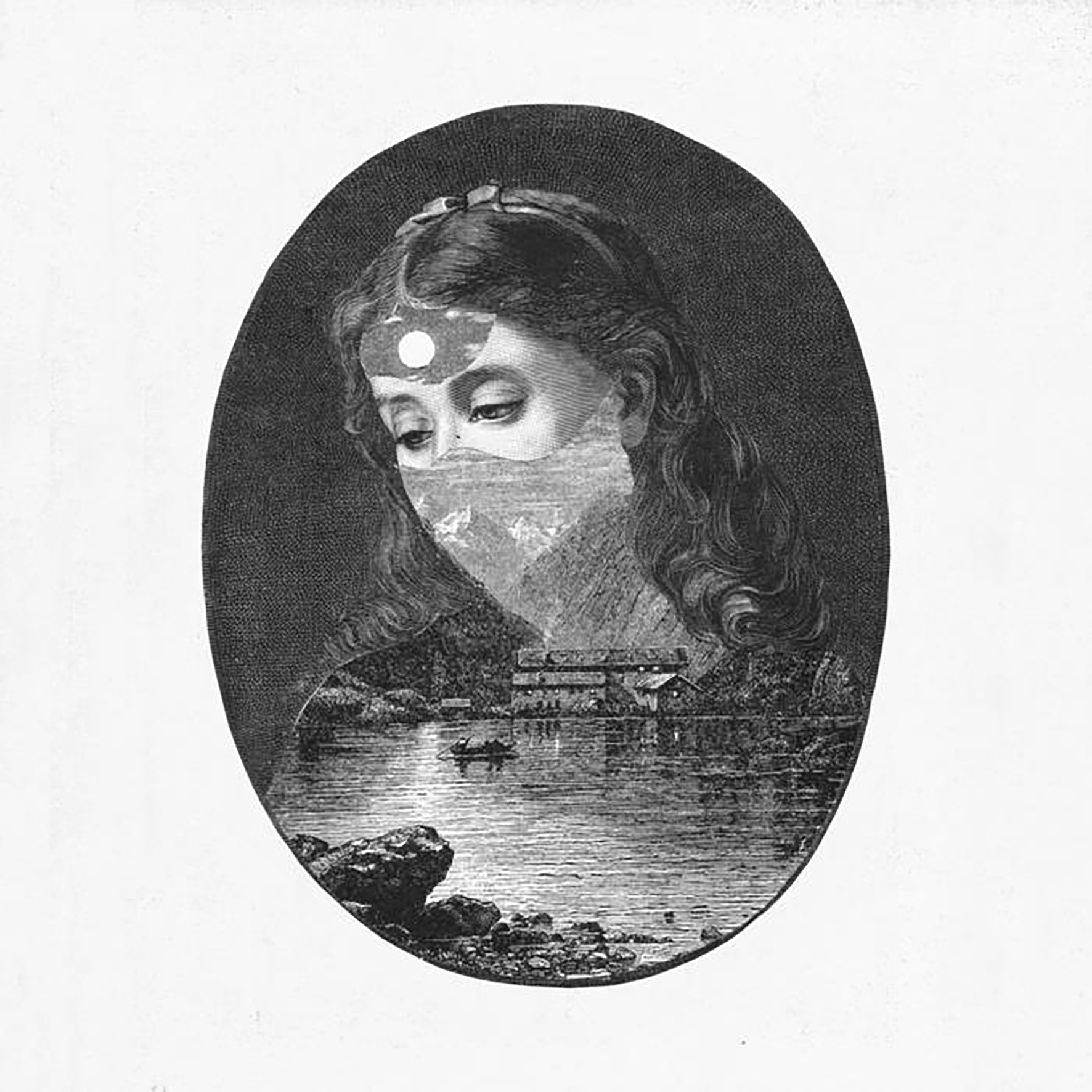 Every now and then, I plan to have a productive evening, get sucked into a Bandcamp rabbit hole, then wonder where the hell my night went. I first encountered Paw Grabowski's √∏jeRum project during one such plunge last year and quickly fell in love with 2018's Selected Organ Works tape. Notably, Grabowski does not seem to share my time-management issues, as he has released roughly ten more albums since then (three of them in the last month). Needless to say, he is a difficult man to keep up with and tracking down which releases are especially inspired is a legitimate challenge. These two recent ones are quite good ones, though they take very different directions. The stronger one is arguably the newer Alting Falder I Samme Rum, which intermittently contains some of the most beautiful examples of Grabowski's blurred, slow-motion vision. Forgotten Works, on the other hand, is exactly what the title implies: a collection of unreleased songs spanning nearly a decade. It is quite a well-curated one though, as the Vaknar label unearthed some surprising gems that had miraculously eluded release up until now.
Every now and then, I plan to have a productive evening, get sucked into a Bandcamp rabbit hole, then wonder where the hell my night went. I first encountered Paw Grabowski's √∏jeRum project during one such plunge last year and quickly fell in love with 2018's Selected Organ Works tape. Notably, Grabowski does not seem to share my time-management issues, as he has released roughly ten more albums since then (three of them in the last month). Needless to say, he is a difficult man to keep up with and tracking down which releases are especially inspired is a legitimate challenge. These two recent ones are quite good ones, though they take very different directions. The stronger one is arguably the newer Alting Falder I Samme Rum, which intermittently contains some of the most beautiful examples of Grabowski's blurred, slow-motion vision. Forgotten Works, on the other hand, is exactly what the title implies: a collection of unreleased songs spanning nearly a decade. It is quite a well-curated one though, as the Vaknar label unearthed some surprising gems that had miraculously eluded release up until now.
Alting Falder I Samme Rum (roughly "everything falls into the same room") consists of six numbered pieces that loosely alternate back and forth between guitar and organ/synth, but any details beyond that are in short supply.Grabowski is an enigmatic fellow and his shifting aesthetic is kind of a tough one to nail down, though "minimalist" is definitely an apt descriptor.I suspect øjeRum albums will be eternally categorized as "drone" or "ambient" for lack of a better term, but Grabowski's vision is fundamentally a melodic one at its core.William Basinski and his decaying tape loops spring to mind as the closest kindred spirit, as both artists compose pieces from obsessively repeated melodic fragments and the subtle dynamic and textural shifts within those fragments are every bit as important as the actual notes.However, while loops admittedly play quite a central role in øjeRum, there is a considerable amount of nuanced interplay between those loops and Grabowski's live instrumentation and the line between the two is an extremely blurry one.In fact, "blurry" is essentially where øjeRum lives, as melodies unfold so slowly that it almost feels like they are in a state of suspended animation.They are far from static, however, as they dissolve and leave lingering trails like curls of smoke.When it works, it yields sublimely beautiful results, evoking a kind of languorous, ghostly dance. When it does not, it just feels kind of sleepy and melancholy.Both sides appear on Alting Falder I Samme Rum, but the strength of the best pieces is enough to weigh the balance in a favorable direction.  
For the most part, it is the spectral, dreamlike guitar pieces that steal the show on the album.Lamentably, there are only two, but they are both absolutely gorgeous.The first, "II," is a fairly brief and hauntingly sad piece, resembling something like an lovesick and undulating supernatural mist.A lingering sadness still clings to the lengthier "IV" several songs later, but it is a bit warmer and more contemplative, recalling some of Benoit Pioulard's more drone/ambient work in the way the shivering guitar swells sound like they were recorded on a wobbly blank tape that has been endlessly reused since the mid-'80s. The remaining four pieces are more conspicuously loop-driven, though the amount of heavy lifting that those loops do varies quite a bit from piece to piece.My favorite is the tenderly lovely and slowly pulsing "V," as its repeating organ motif is quite a poignant and hypnotic one.Moreover, it is one of the more unpredictable and dynamic pieces on the album, as Grabowski embellishes the central theme with lazily tumbling harp-like melodies that leave lingering trails of quivering delay.The epic closing piece ("VI") is a highlight as well, though it is an extremely slow-building one.The main theme is essentially a melancholy and gently rippling arpeggio that endlessly repeats, accumulating a haze of slowly dissolving afterimages.Gradually, however, a lazily flickering synth swell emerges from the miasma of hiss and delay and the nuanced interplay of the two themes and their vapor trails coheres into soft-focus heaven of overlapping ripples.It evolves a bit too slowly to be an unqualified triumph, but four great or nearly great songs out of six is a damn good ratio.
Samples can be found here.

The Vaagner/Vaknar label has only been around since 2018, but it has quickly established itself as imprint with an impressively focused aesthetic, both musically and visually.Given that Grabowski is himself a visual artist with a distinctive aesthetic, it is no surprise that he and the label have such an affinity or that he would trust them with sifting through his archives to pull together an ambitious collection like Forgotten Works.After all, Vaknar was the label that previously released the great Selected Organ Works, which was similarly a collection of unreleased material spanning several years (albeit one with a considerably narrower focus).
Unlike its processor, Forgotten Works celebrates the full range of√∏jeRum's vision, even including directions that have long since been abandoned (I think).I would love to make an insightful metaphor here about how the album mirrors Grabowski's non-musical work as a collage artist, but it is far more apt to view these sixteen untitled vignettes as a kind of mosaic: given the lack of titles and the sprawling nature of a double-cassette release, the cumulative whole is arguably more of a significant statement than any of the individual pieces.At least, that was probably the intention.In reality, however, several pieces emerge from the somber, hiss-soaked haze to assert themselves and I am glad that they do.In the case of the first two pieces, which I will call "A1" and "A2," it is frankly astonishing that they remained unreleased for this long.
I suppose "A1" is essentially built on a slow and lovely succession of strummed acoustic guitar chords, but the spaces between them are beautifully filled with alternately plinking, ringing, and lingering tones.The overall effect is quite a blissfully sublime one, approximating a kind of enchanted antique music box that can slow down time.I believe guitars also provide the shimmering ambient backdrop of "A2," but the heart of the piece is a wobbly, bittersweetly lovely synth motif that endlessly see-saws across a warm, dreamlike landscape.The remaining two pieces on that first side are quite good as well, but the hit parade becomes somewhat erratic after that point, with gems like the quavering, meditative synth reverie "B4" and the blearily tumbling piano arpeggios of "C1" interspersed with more somber, atmospheric fare that leaves less of an impression.The album finishes quite strongly, however, as a trio of stellar pieces appear on the final side.
The first ("D2") is a lazily cascading autoharp piece in which the sharpness of the plucked notes beautifully cuts through the haze of their slowly dissolving decay.In the following piece ("D3"), Grabowski beautifully intertwines two shimmering and pulsing motifs to craft a sensuously quivering nirvana.That late-album hot streak extends all the way through a perfect closing farewell, as the album ends with a half-hopeful/half-sad organ mass of sorts that somehow uses tape hiss to evoke the illusion of a beautiful empty beach at sunrise (empty except for the inexplicable presence of an organist in an especially soulful and introspective mood, anyway).If Forgotten Works has a flaw, it is only that it accidentally transcends its intended purpose–had it not been planned as a deep-dive retrospective of orphaned songs, the best seven or eight of these pieces could have easily been released as a uniformly great new album.Instead, this album is more comprehensive than distilled, but I was legitimately caught off-guard by how wonderful the strongest moments were.
Samples can be found here.
Read More

